
Is there anything that makes you think about summer more than the smell of fresh lemons? These vibrant yellow fruits are perfect for any type of recipes, and, let's be honest, there's never enough of them! Which is why we're presenting you with tiny delicacies known as Mini Lemon Tarts! These mini desserts are made with a shortcrust pastry and lemon cream, and are delicious and fragrant: enjoy them for a tasty snack, accompanied by a cup of tea or serve them as a dessert at the end of a meal. Once you have made the shortcrust pastry with oil, all you need to do is make some balls with which we will form our baskets: bake them in the oven for half an hour, before filling them with a delicious lemon cream, and serve them with icing sugar. These mini pastries are prepared in just a few steps and will conquer everyone.
What are Mini Lemon Tarts?
Mini lemon tarts are delightful bite-sized pastries featuring a buttery shortcrust base filled with a tangy lemon cream. These tarts combine a crisp, sweet shell with a smooth, zesty filling, offering a perfect balance of flavors and textures. Originating from European baking traditions, tarts have evolved over centuries. Lemon tarts, in particular, gained popularity in France and England during the 19th century, showcasing the citrus fruit's versatility and refreshing taste. These mini versions make an elegant and delicious dessert, ideal for any occasion.
Tips for The Best Mini Lemon Tarts
- After preparing the shortcrust dough, chill it in the refrigerator for about 30 minutes. This makes it easier to handle and helps prevent shrinking during baking.
- Cook the lemon cream filling on low heat and stir constantly to prevent lumps. This ensures a smooth, velvety texture.
- Let the baked tart shells cool completely before adding the lemon cream. This prevents the filling from melting or becoming too runny.
- A dusting of powdered sugar adds a lovely finishing touch. You can also garnish with a small twist of lemon zest or a fresh berry for added appeal.
- If not serving immediately, store the filled tarts in the refrigerator. This helps set the filling and keeps the tarts fresh.
What Are The Best Lemons to Use for The Pastry and the Cream?
The best lemons to use for both the pastry and the cream are organic, fresh lemons, preferably Eureka or Lisbon varieties. These lemons have a bright, tangy flavor and aromatic zest, which are ideal for enhancing the taste and fragrance of your mini lemon tarts.
Can I Use Store-Bought Lemon Juice?
While you can use store-bought lemon juice, fresh lemon juice is recommended for the best flavor and aroma in your mini lemon tarts. Fresh lemons provide a brighter, more vibrant taste that significantly enhances the overall quality of the pastry and cream.
Can I Use Butter Instead of Oil For The Pastry?
Yes, you can use butter instead of oil for the pastry. Using butter will give the pastry a richer flavor and flakier texture. Substitute the oil with an equal amount of melted or softened butter in the recipe.
Why is My Shortcrust Crumbly?
The shortcrust pastry is crumbly due to its high fat content and minimal liquid, which creates a tender and flaky texture. The fat, whether butter or oil, coats the flour particles, preventing too much gluten development and resulting in a crumbly, melt-in-your-mouth consistency.
Why Did My Pastry Puff Up In The Center?
The pastry puffed up in the center while baking because air or steam was trapped in the dough, and it wasn't pricked with a fork. Pricking the dough allows steam to escape, preventing it from puffing up and ensuring an even, flat bake.
How Can I Enrich This Recipe?
This recipe can be enriched by adding a layer of fruit preserves or curd beneath the lemon cream, incorporating a sprinkle of finely chopped nuts into the crust, or topping the tarts with fresh berries and a dollop of whipped cream.
Can I Add Some Other Decorations to The Tarts?
Yes, you can add other decorations to the tarts, such as fresh mint leaves, edible flowers, a drizzle of white chocolate, or a dusting of finely grated lemon zest.
Can I Make This Into One Big Tart, Instead?
Absolutely! Simply press the dough into a large tart pan and adjust the baking time accordingly, ensuring the crust is fully baked and golden before adding the lemon cream.
Are These Tarts Gluten-Free?
No, this recipe is not gluten-free as it uses all-purpose flour. To make it gluten-free, substitute the flour with a gluten-free flour blend.
Can I Make These Mini Tarts Ahead of Time?
Of course! Prepare and bake the crusts and make the lemon cream in advance. Store the crusts in an airtight container and the lemon cream in the refrigerator. Assemble the tarts just before serving.
Can These Tarts Be Frozen?
Yes, these mini tarts can be frozen. Freeze the baked tart shells and the lemon cream separately. Assemble the tarts after thawing both components in the refrigerator.
More Lemon Recipes to Enlighten Your Summer
How to Store Mini Lemon Tarts
Store any leftovers in an airtight container in the refrigerator. They will keep for up to 3 days.
Ingredients
How to Make Mini Lemon Tarts
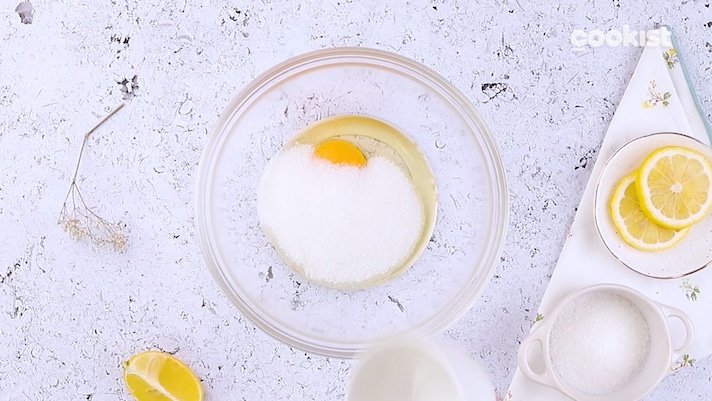
In a bowl add the egg and sugar and whisk until sugar dissolves.
In a bowl add the egg and sugar and whisk until sugar dissolves.
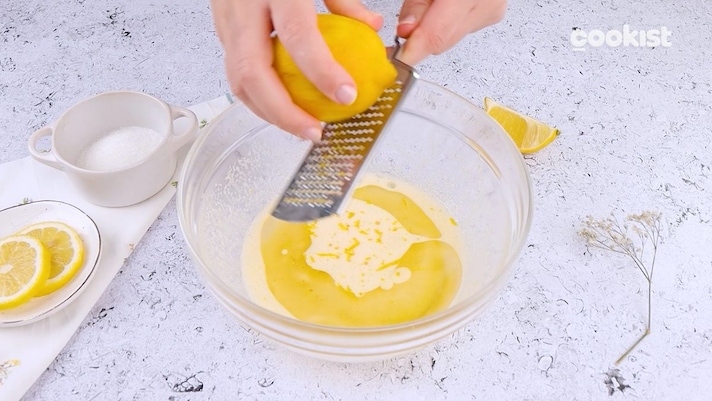
Add the vegetable oil and grate the zest of the lemon and mix again, to incorporate the ingredients together.
Add the vegetable oil and grate the zest of the lemon and mix again, to incorporate the ingredients together.
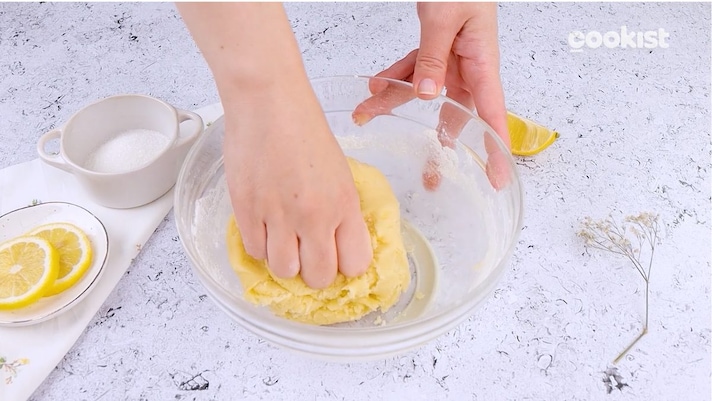
Add the flour and the baking powder and mix to combine, first with a spatula and then with your hands, once the dough has started to form, until you obtain the compact dough.
Add the flour and the baking powder and mix to combine, first with a spatula and then with your hands, once the dough has started to form, until you obtain the compact dough.
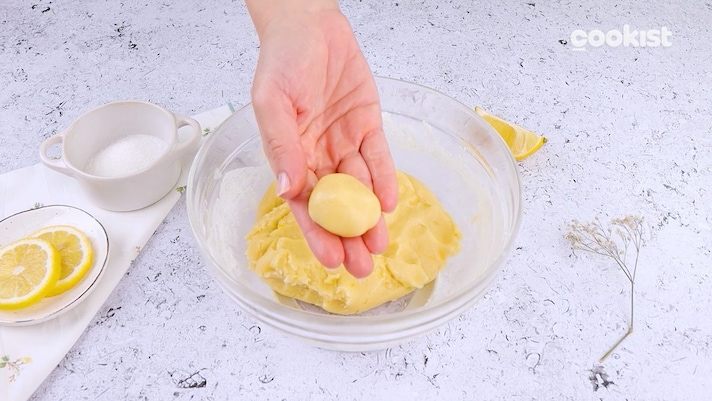
Split the dough into 12 pieces of the same size and roll them into balls.
Split the dough into 12 pieces of the same size and roll them into balls.
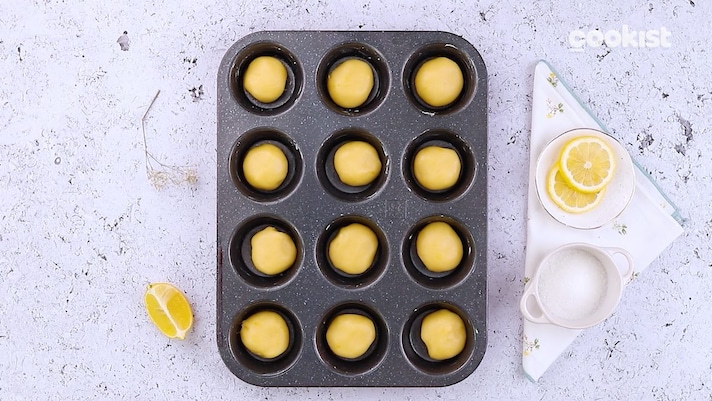
Transfer each piece into a muffin mold, then press them with your fingers to cover the whole part of the muffin mold.
Transfer each piece into a muffin mold, then press them with your fingers to cover the whole part of the muffin mold.
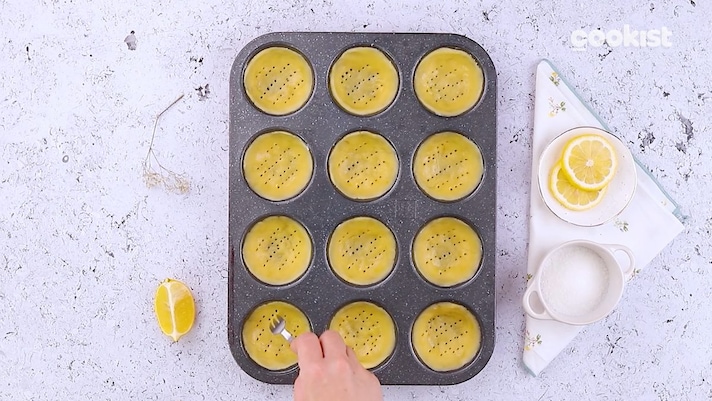
Prick the little tarts with a fork, and then bake at 360°F (180°C) for about 30 minutes.
Prick the little tarts with a fork, and then bake at 360°F (180°C) for about 30 minutes.
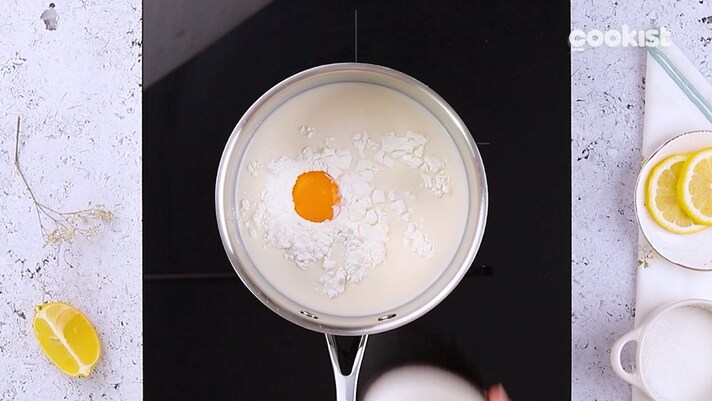
In a saucepan, in the meantime, add the milk, vanilla sugar, cornstarch, sugar and egg yolk and mix until the cream starts forming and thicking.
In a saucepan, in the meantime, add the milk, vanilla sugar, cornstarch, sugar and egg yolk and mix until the cream starts forming and thicking.
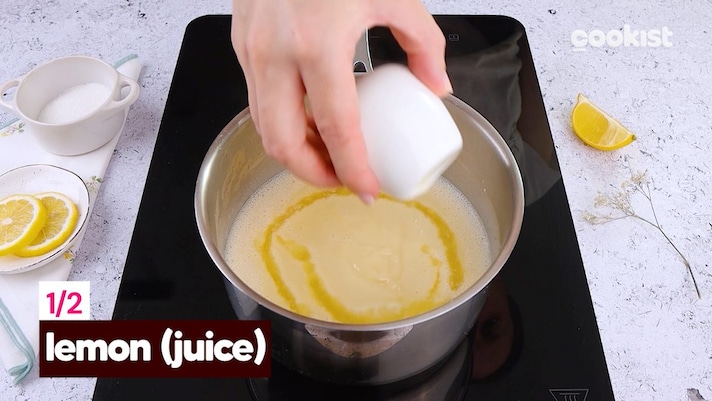
Add the lemon juice and keep stirring over low heat.
Add the lemon juice and keep stirring over low heat.
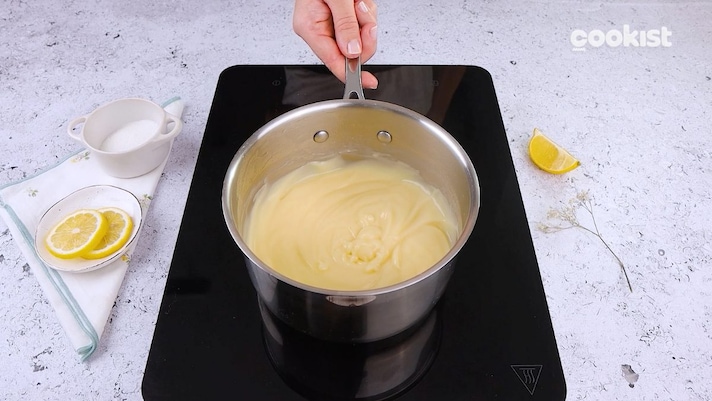
Once the cream has reached the desired velvety texture, take it off the heat and let it cool down.
Once the cream has reached the desired velvety texture, take it off the heat and let it cool down.
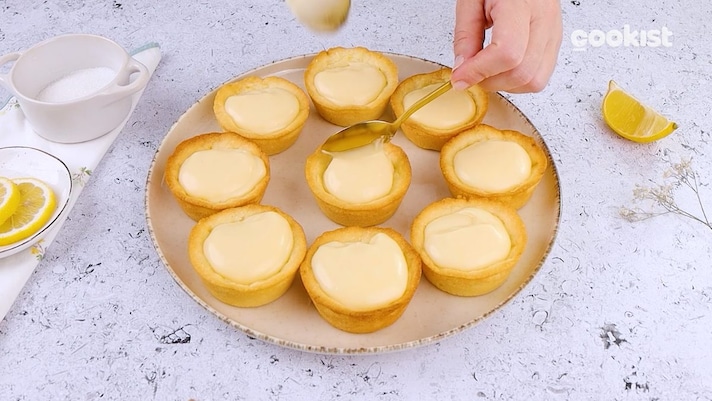
Transfer the various pastry baskets to the plate and fill each of them with the prepared lemon cream, using a spoon to dose it.
Transfer the various pastry baskets to the plate and fill each of them with the prepared lemon cream, using a spoon to dose it.

Decorate with a generous drizzle of powdered sugar.
Decorate with a generous drizzle of powdered sugar.

Enjoy!
Enjoy!

;Resize,width=767;)
